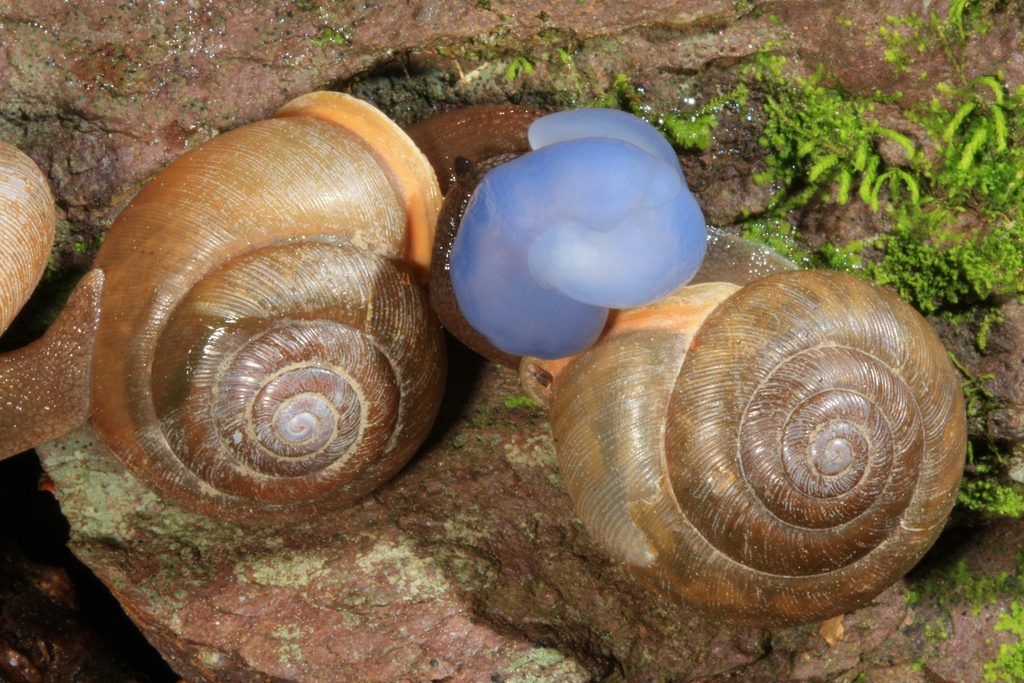
Reproduction
Although very little is known about the
specific reproductive cycle of
Mesodon altivagus, we
are able to assume similarities when describing the order
Stylommatophora, or Pulmonate land snails.
The Pulmonate land snails are monoecious, meaning
they contain both sex organs complete with
testes, sperm, and penis; ovaries, eggs, and
oviduct (Dourson, 2010). Through internal and cross fertilization,
Pulmonates exclude the veliger larvae stage during development.
therefore possessing a direct lifestyle (Wilbur et al., 1964).
The beginning of the reproductive cycle can be first seen through
the courtship behavior of land snails (Wilbur, 1984). Courtship has
been recorded in a multitude of different time intervals, lasting
from a few minutes up to 34 hours (Wilbur, 1984). When the mates
meet, they begin courtship with a series of touching and specific
movements (Hotopp et al., 2006).
Some courting rituals also include body injury by one land snail
biting the other with the use of their jaw or radula (Wilbur, 1984).
Once ready for copulation, the quick exchange of spermatophores
occurs when the penis of one Pulmonate is inserted into the genital
pore
of the other (Wilbur, 1984). When the spermatophore is introduced in
the vagina, the sperm is released from the spermatophore and begins
fertilization with the eggs in the fertilization chamber (Hotopp
et al., 2006). The egg then passes through the
uterus as it is covered with a protective coating of calcium
carbonate before it exits the body (Wilbur, 1984). Since dry areas
are the leading cause of death in the eggs, they are laid in
consistently wet areas, such as under logs or leaves (Wilbur, 1984).
Many snails also dig small nests in damp soil in which they
lay their eggs (Wilbur, 1984). After about 2 days, the
juveniles hatch (Branson, 1961).
Mesodon thyroidus, a similar species to Mesodon altivagus, undergoing cross fertilization
Reproduction season for land snails tend to begin
in late February to mid-summer due to milder temperatures and moist
soil (Branson, 1961). Mating mainly occurs at night, however cases
of mating during the daytime and early morning have been recorded
(Wilbur, 1984).
Reports have noted that many external factors can
affect mating frequency, such as a rise of copulation during times
of rain (Wilbur,
1984). Additionally, it has been found that temperature,
aridity, as well as light can affect gonad development in the snail
(Wilbur,
1984).
Mesodon thyroidus, a closely related species to Mesodon altivagus, was found to deposit packets of 20-80 eggs in small nests in damp soil (University of Florida Entomology & Nematology, 2011). Furthermore, they have a life span of at least 2 years (University of Florida Entomology & Nematology, 2011). We can assume that Mesodon altivagus shares similar characteristics due to their close relation.
A cluster of Mesodon eggs found under a rotting piece of log in the forest
Go Home!

